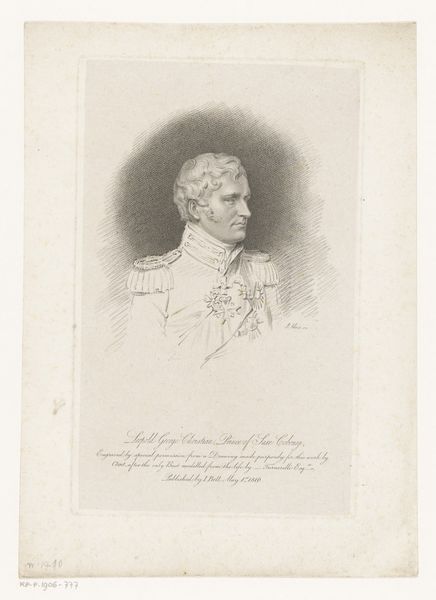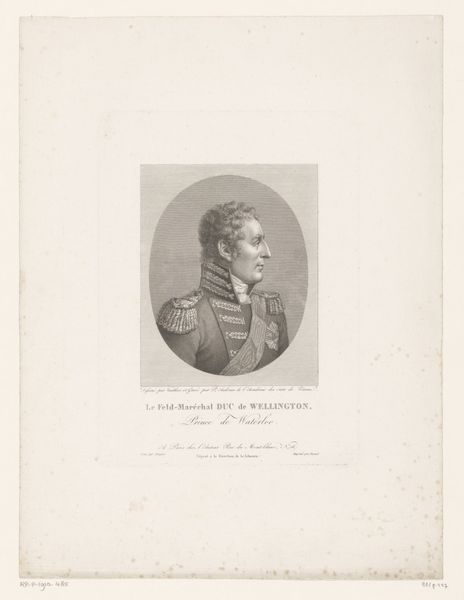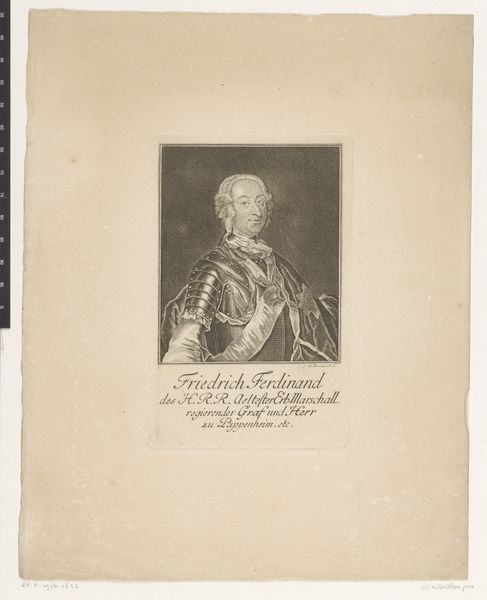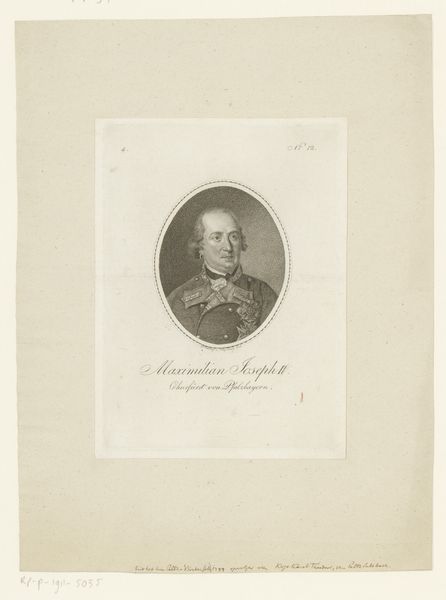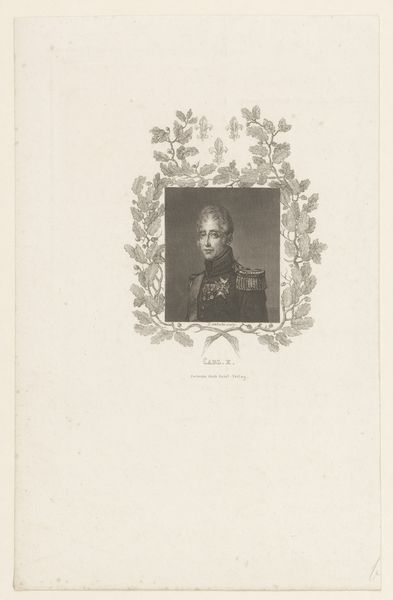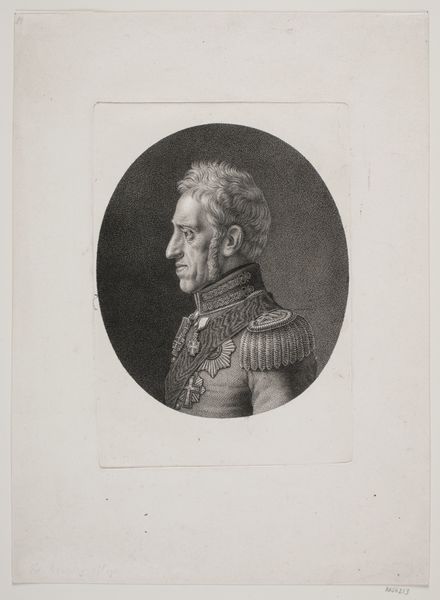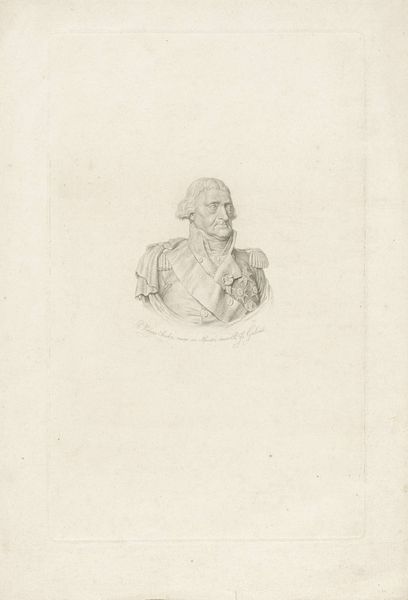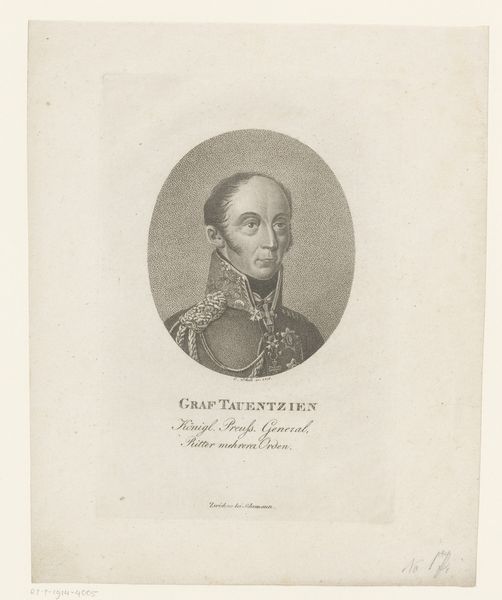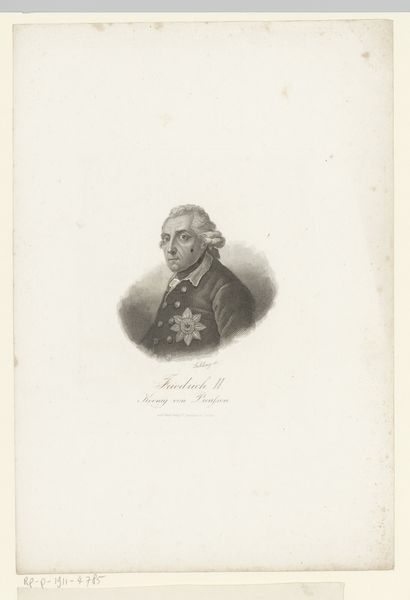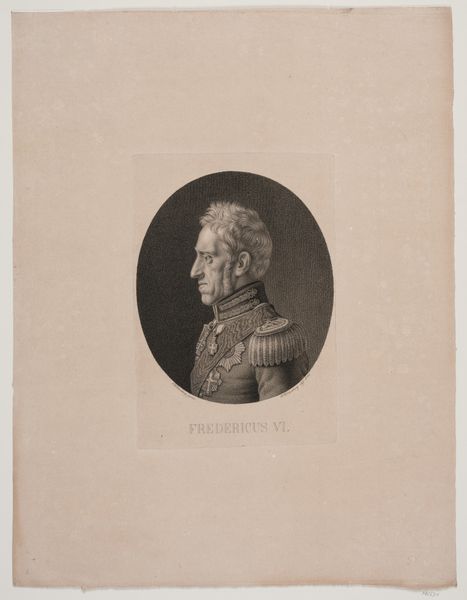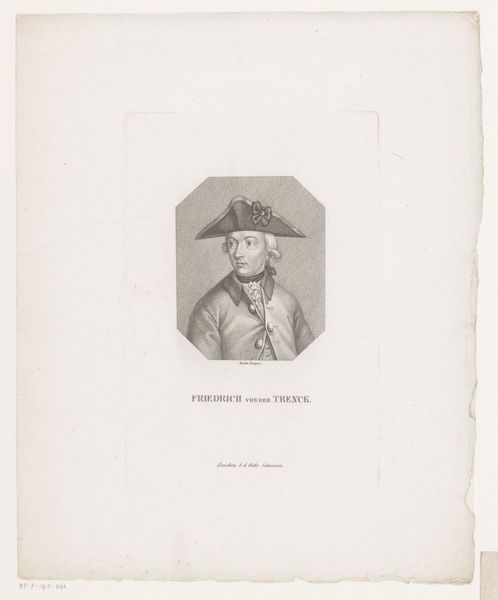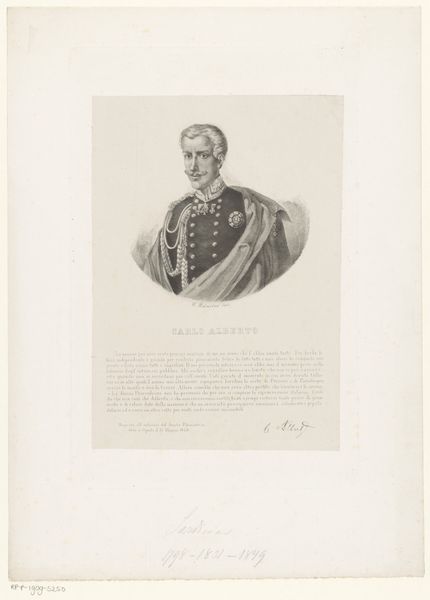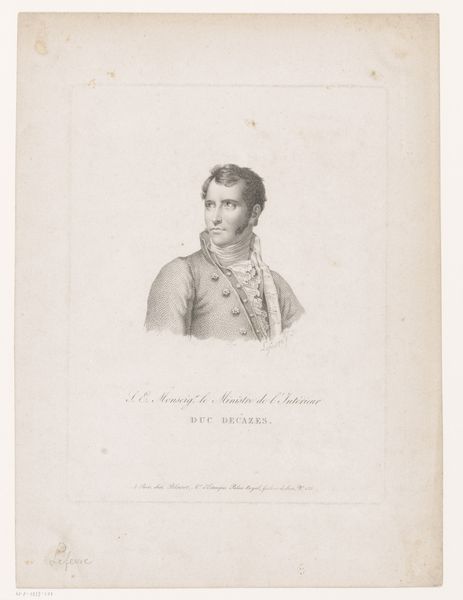
print, engraving
#
portrait
#
neoclassicism
# print
#
15_18th-century
#
history-painting
#
engraving
Dimensions: height 209 mm, width 170 mm
Copyright: Rijks Museum: Open Domain
Curator: It's a Neoclassical engraving dating somewhere between 1786 and 1832, identified as a portrait of Horatio Nelson by Johann Josef Neidl. Its subdued tones give it a somewhat ghostly appearance. Editor: You’re right, there's something quite ethereal about it, almost like Nelson is fading into the paper itself. Do you get that sense of melancholy too, as if he’s already aware of his own tragic fate? Curator: It is history rendered with the formality characteristic of Neoclassicism, though not without nuance. Let’s consider the engraving process itself, translating form into a series of precise lines and patterns, a type of objective assessment so prized during the Enlightenment. The face, caught in a strict oval frame, becomes less about the subjective and more about idealized concepts of order and heroism. Editor: Maybe, but I can’t help reading defiance in his gaze. The formal structure seems to attempt containment, yet that slight upward tilt of his chin feels incredibly resistant. And all those swirling cloud-like details – do they serve just to give him depth or evoke his battlefield victories at sea, all smoky chaos and tempest? Curator: Interesting point! Consider the visual effect achieved through stippling and hatching—density suggests depth. The uniform is carefully detailed but the face—more evocative than exacting, yes? Note, though, the artist does adhere to neoclassical precepts that focus on the values of rationality and measured restraint. Editor: Still, I sense the individual peering out. It feels like a struggle between a man and the image he must project – that's the source of the melancholy. He knew his duty would call him into danger. Curator: Yes, the print certainly encapsulates the tension between historical role and personal destiny so pervasive during that period. This portrait also reminds me of the role prints played in spreading particular beliefs and in consolidating celebrity in past times. Editor: Well, it got us thinking and feeling – what better purpose for art, even within the most controlled of forms?
Comments
No comments
Be the first to comment and join the conversation on the ultimate creative platform.
